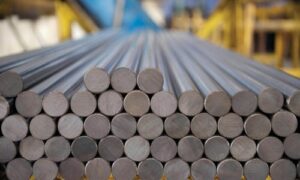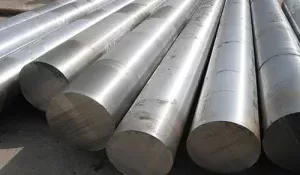Introduction
The 316 stainless steel round bar is a versatile and corrosion-resistant material that finds application in various industries, from construction to manufacturing. When embarking on a project that demands the use of 316 stainless steel, one of the critical decisions is determining the right size and shape of the round bar. This choice influences the structural integrity, functionality, and cost-effectiveness of the final product. In this comprehensive guide, we will unravel the complexities of selecting the ideal size and shape of 316 stainless steel round bar, ensuring your project’s success.
- Introduction
- Understanding 316 Stainless Steel
- Size Matters: Selecting the Right Diameter
- Factors Influencing Diameter Choice
- Shape Matters: Exploring Various Profiles
- Common Shapes
- Matching Size and Shape to Applications
- Practical Considerations
- FAQ
Understanding 316 Stainless Steel
Before delving into size and shape considerations, let’s revisit the fundamentals of 316 stainless steel.
Composition
- Chromium (Cr): 16-18%
- Nickel (Ni): 10-14%
- Molybdenum (Mo): 2-3%
- Iron (Fe): Base element
Key Properties
- Corrosion Resistance: Exceptional
- Mechanical Strength: High
- Ductility: Excellent
- Heat Resistance: Good
Size Matters: Selecting the Right Diameter
Factors Influencing Diameter Choice
The diameter of a 316 stainless steel round bar significantly impacts its performance in a given application. Several factors should guide your diameter selection:
1. Load-Bearing Capacity: Consider the loads the bar will bear. Larger diameters provide higher load-bearing capacity and resistance to bending or deformation.
2. Stress Levels: Determine the stress levels the bar will experience. Higher stresses may require larger diameters to prevent failure.
3. Space Constraints: Evaluate the available space within your project. Ensure the chosen diameter fits without compromising structural integrity.
4. Weight Constraints: If weight is a concern, opt for a smaller diameter as it will be lighter. This is crucial in applications like aerospace.
5. Cost: Larger diameters often come at higher costs due to more material and processing. Consider your budget when choosing.
Shape Matters: Exploring Various Profiles
316 stainless steel round bars are available in various shapes, each suited to specific applications. The choice of shape affects factors like strength, weight distribution, and ease of fabrication.
Common Shapes
1. Round Bar:
- Advantages: Uniform distribution of stress and ease of machining.
- Applications: General-purpose use in construction, manufacturing, and structural applications.
2. Hexagonal Bar:
- Advantages: Enhanced gripping surfaces, preventing rolling and facilitating torque transmission.
- Applications: Used in fasteners, fittings, and machinery where secure gripping is crucial.
3. Square Bar:
- Advantages: Balanced distribution of weight and stress, easy to machine.
- Applications: Structural components, fasteners, and architectural elements.
4. Flat Bar:
- Advantages: Large surface area, suitable for load distribution.
- Applications: Brackets, supports, and where load-bearing surfaces are needed.
Matching Size and Shape to Applications
The selection of size and shape should align with the specific requirements of your project. Here are some application-specific guidelines:
1. Marine Applications:
- Size: Consider the vessel’s size and weight, opting for larger diameters for larger vessels.
- Shape: Round bars are common, while hexagonal shapes can provide grip on wet surfaces.
2. Aerospace Engineering:
- Size: Weight is critical; choose smaller diameters for components subjected to high-altitude stress.
- Shape: Round or hexagonal bars are often used for their balance of strength and weight.
3. Construction and Architecture:
- Size: Depends on load-bearing requirements; larger diameters for structural elements.
- Shape: Square or round bars for aesthetic and structural purposes.
4. Machinery and Manufacturing:
- Size: Consider torque, load, and space constraints when selecting diameters.
- Shape: Hexagonal or square bars for torque transmission and stability.
Practical Considerations
1. Availability:
Ensure that the size and shape you require are readily available from suppliers. Custom orders may be costly and time-consuming.
2. Machinability:
Consider the ease of machining the chosen shape and size. Complex shapes may require specialized tools and skills.
3. Cost-Benefit Analysis:
Evaluate the cost implications of your choice. Sometimes, a slightly larger diameter may significantly enhance performance without a substantial cost increase.
FAQ
1. Can I cut or modify a 316 stainless steel round bar to achieve a specific size or shape?
Yes, 316 stainless steel round bars can be cut or machined to achieve the desired size and shape. However, it’s essential to use appropriate tools and techniques to maintain the material’s integrity and corrosion resistance.
2. Are there industry standards for sizing and shaping 316 stainless steel round bars?
Yes, various industry standards and specifications exist for sizing and shaping stainless steel bars. It’s crucial to consult these standards when selecting the appropriate size and shape for your application.
3. Can I use 316 stainless steel round bars in high-temperature applications?
Yes, 316 stainless steel round bars have good heat resistance and can be used in high-temperature applications, provided they are within the material’s temperature limits.
4. How can I calculate the required diameter for my project?
Calculating the required diameter involves considering factors like load, stress, and the specific application. Engineering formulas and simulations can help determine the optimal diameter based on these factors.
In conclusion, choosing the right size and shape of 316 stainless steel round bar is a critical decision that directly impacts the performance and longevity of your project. It requires a thoughtful analysis of load requirements, space constraints, and budget considerations. By aligning these factors with the unique properties of 316 stainless steel, you can ensure the success and durability of your endeavor.


